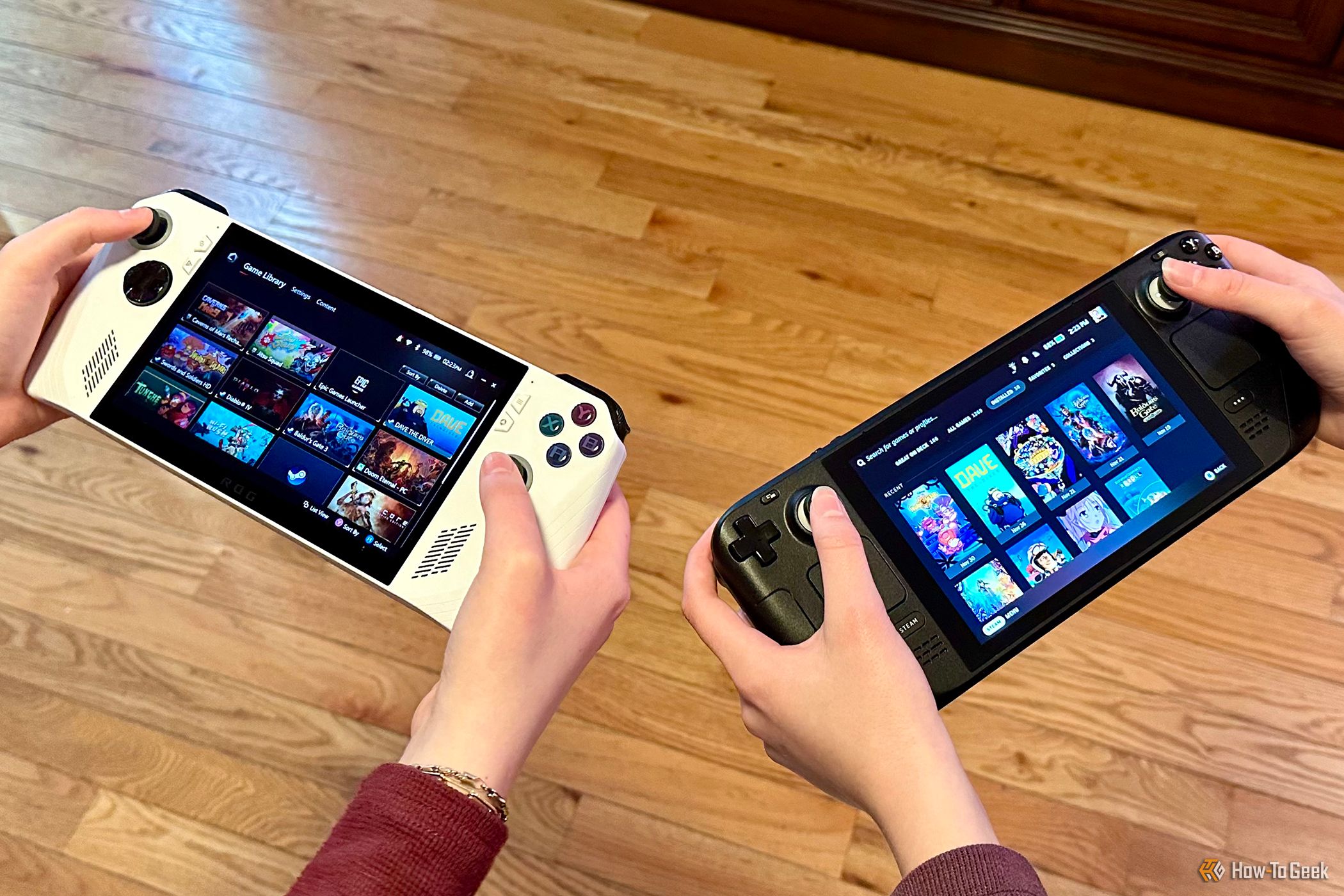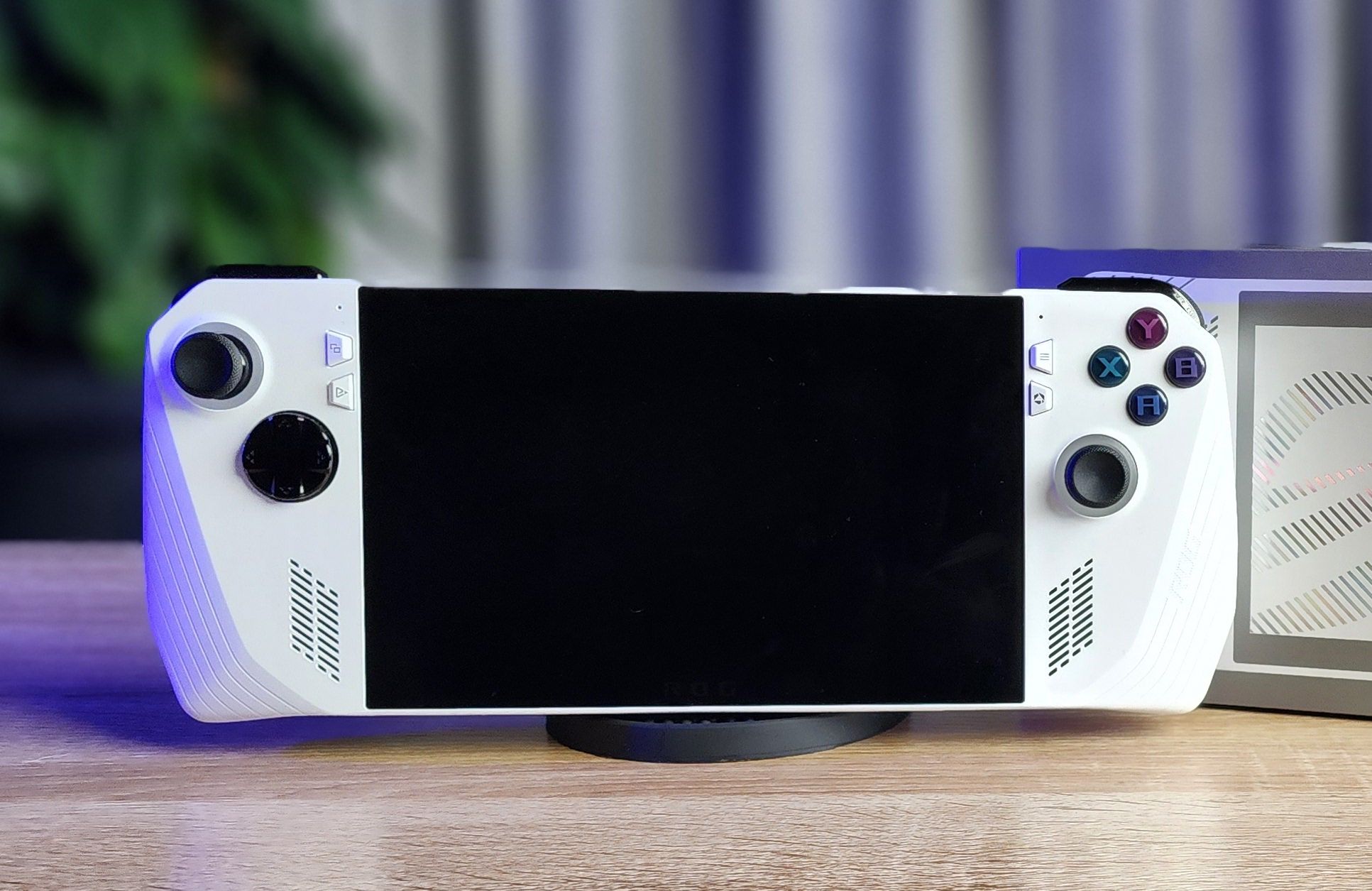
Embrace PC Gaming with Alternatives to Traditional Desktops

Embrace PC Gaming with Alternatives to Traditional Desktops
Key Takeaways
- You don’t need a massive PC tower anymore; even handheld devices can provide a great gaming experience.
- Most PC gamers use mid-range GPUs and play at 1080p or 1440p, not 4K.
- Mid-range laptops like the ASUS TUF A17 provide console-level gaming performance in a portable package.
The stereotype of PC gaming is a huge desktop tower filled with rainbow lights and spinning fans, while water gurgles through pipes. However, the reality is much more modest, and most people don’t even need a big rig PC to play.
Just What Is PC Gaming Anyway?
It’s worth clearing up what I mean when I say “PC gaming” since there are different interpretations of the term. First off, a PC is a computer that descends from the original IBM PC . There are broader definitions of “PC” that would include non-IBM compatible systems, but that’s not what the term “PC gaming” refers to.
So any IBM-compatible modern computer falls into the PC gaming sphere, but that would exclude non-Intel Macs. Hang on, what about the current big consoles? They are basically IBM-compatible PCs on the inside right? Well, yes. However, the very nature of PC is that it’s an open standard, and with the PlayStation 5 and Xbox Series consoles the hardware and software has been locked down. You can’t run whatever software you want, and not just anyone can make hardware for those systems.
Gaming PCs Come in All Shapes and Sizes
There has been an absolute proliferation in the form factors that PCs come in. Beyond the desktop tower everyone thinks of, there are tiny mini-ITX systems, Windows gaming tablets like the ASUS ROG Flow Z13 , handheld PCs like the Steam Deck, ultra-thin gaming laptops, ultra thick gaming laptops, and probably even more we haven’t seen yet.
Not to mention, a device doesn’t have to be designated as a “gaming” system to play PC games. Even modest PCs these days have enough performance to competently play most of the PC gaming library, with only games from the last few years out of reach. So, if someone has any sort of PC at all, they can enjoy some form of gaming on it.
Handheld Gaming PCs Are Spreading the Hobby
Handheld PCs have been around for some time, but a combination of Valve’s Steam Deck and advances in power-efficient PC hardware has made a new boom in PC gaming possible. The Steam Deck operating system and software makes PC gaming feel as simple as console gaming, without removing the freedom of PC gaming if you want to dig a little deeper. Even Windows gaming handhelds like the ROG Ally , which offers the raw PC gaming experience, shows that modern PC gaming has come a long way. Most games will just automatically select the right settings for your system, even if you don’t know what any of the settings mean.
Handheld PCs appeal to the lifestyles of a much broader audience than desktop PCs, and since these devices can be docked just like a Nintendo Switch, it offers a level of portability and versatility which would suit most people, regardless of what their circumstances are.
Gaming Laptops Make the Most Sense for the Average Gamer

Asus ROG Ally
The ASUS ROG Ally is the most powerful handheld gaming PC to date, and offers a fantastic gaming experience and access to the massive PC gaming library, but it’s let down by dismal battery life and serious concerns about thermal design and hardware issues.
The PC gaming narrative is largely one of high performance hardware with enthusiasts touting components like the RTX 4090 GPU . However, if you look at, for example, the Steam Hardware Survey , you’ll see that the vast majority of people use mid-range or entry-level GPUs like the RTX 3060, RTX 4060, and stalwarts like the GTX 1650 or 1660 Ti. There are also plenty of old high-end cards out there, such as the RTX 2080 that have a second life as a used card, or an owner who simply hasn’t felt the need to upgrade yet.
Likewise, most PC gamers still play at 1080p, with 1440p the second most popular resolution. 4K PC gaming is still very much an enthusiast niche that doesn’t represent how the average PC gamer enjoys their games.
Which is all preamble to the argument that mid-range gaming laptops—the sort people actually buy—make more sense than traditional desktop gaming. Let’s take the ASUS TUF Gaming A17 as one of many examples. This is a laptop that, as of this writing, goes for around $1300. For that you get a Ryzen 7 CPU, 16GB of RAM, a 1TB SSD, and a mobile version of the RTX 4060 which hews pretty close to the desktop part if you look at the benchmarks.
In other words, this is a laptop with gaming performance in the same ballpark as current-generation consoles, which puts you at the upper end of the mid-range gaming experience, pretty much where the consoles enjoyed by millions reside. A console is $500, and the laptop you inevitably need for work or school is at least another $500, so the premium in this case to have all of that in one box is around $300, which also brings all the benefits and convenience of the laptop form factor with it.
Of course, gaming laptops come with their own inherent issues compared to, say, a MacBook Air, but for the typical college student or person on the street this option actually makes the most sense in my view. Yes, the common retort is that you can’t upgrade a laptop, but as I have argued before, the PC upgrade cycle is largely a myth .
You’ll pay for this laptop now, and it will continue to play games competently until the next-generation of consoles arrive, since these set the minimum bar for cross-platform games.
Even Desktops Are Changing
While big rig gaming towers just seem to get even more ridiculous at the high end of the hardware spectrum, more people are finding the appeal in those small form factor desktop systems I mentioned above.
Mid-range hardware that’s in the sweet spot of performance, power consumption, and heat production allows for truly compact and potent gaming systems that are just as at home under a TV as a console, or as part of a clean, minimalist desk arrangement.
The culture of enthusiast desktop PC gaming will never truly go away, and for many the entire appeal of PC gaming is in getting their hands dirty building, tuning, and benching their rigs. However, PC gaming is evolving beyond that and with more convenient hardware gaining enough performance to satisfy the bulk of gamers, the future of PC gaming may take on a very different image in the minds of players.
Also read:
- [New] Tips for Amplifying Minecraft Performance via RAM Increase
- [New] VDY HD Snapshot Reviews Complete Evaluation for 2024
- [Updated] 2024 Approved Accelerate Your Classic Gaming - Top Choices of Android Emulators for PS2
- [Updated] In 2024, Unraveling the Enthralling Elements of Filmora Editing
- 2024 Approved Notable Industry Players Driving VR Growth
- 2024 Approved The Artisan's Guide to Personal Branding via YouTube
- From Sound to Size - Analyzing the Key Differences Between Echo Pop & Echo Dot
- In 2024, Crafting the Perfect Sound for Stories & Reels on Instagram
- In 2024, Universal Unlock Pattern for Tecno Pop 8
- LG K51 Smartphone Assessment: Stunning Aesthetics Diminished by Sluggish CPU
- Maximize Your Wallet with Top-Notch Apple Deals on Prime Day
- Maximizing Your Network: An In-Depth Review of the Netgear AC1200 Wireless Range Extender (EX6200)
- Microsoft Surface Laptop 4 Analysis - Top Performance and Design Unveiled
- Navigating New Features in Monterey Release
- Top 10 AirPlay Apps in Xiaomi Redmi Note 12 5G for Streaming | Dr.fone
- Title: Embrace PC Gaming with Alternatives to Traditional Desktops
- Author: Kenneth
- Created at : 2024-09-28 16:35:50
- Updated at : 2024-10-01 19:45:34
- Link: https://buynow-tips.techidaily.com/embrace-pc-gaming-with-alternatives-to-traditional-desktops/
- License: This work is licensed under CC BY-NC-SA 4.0.